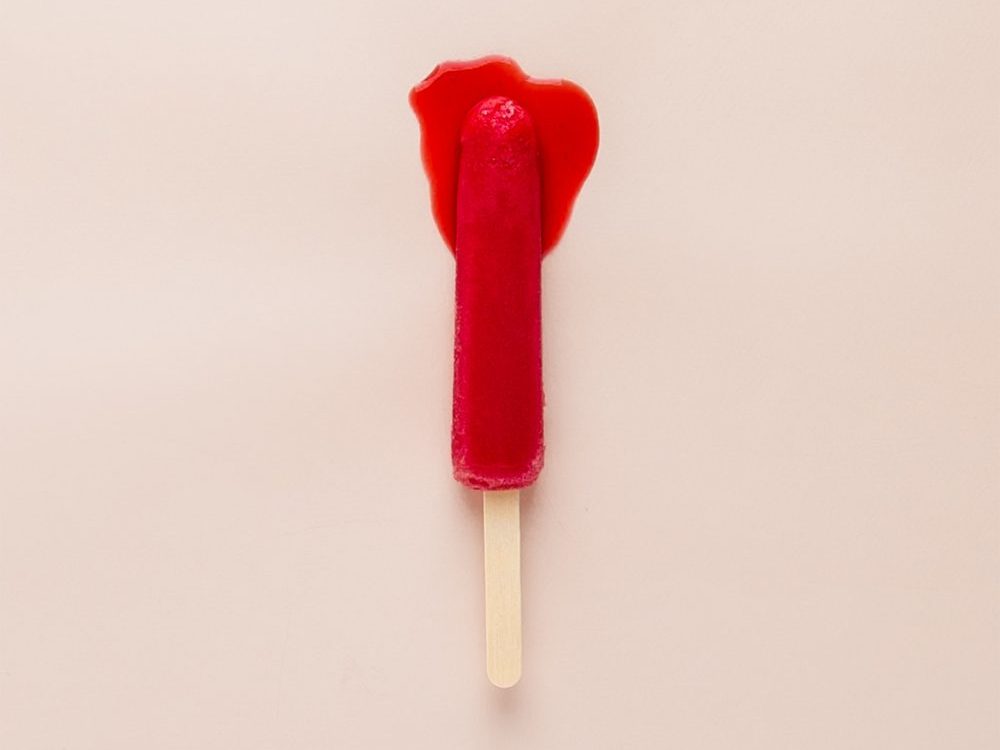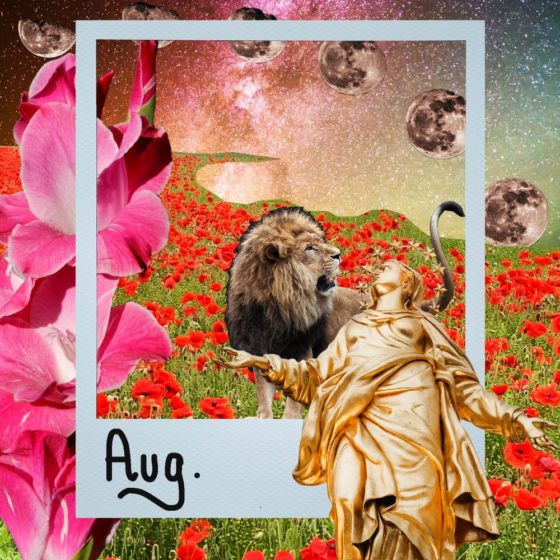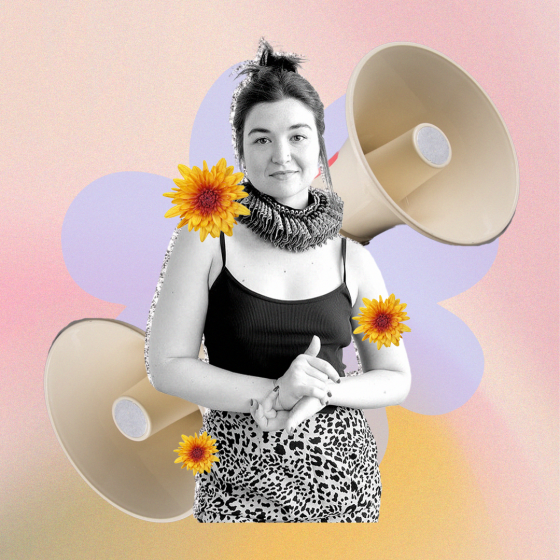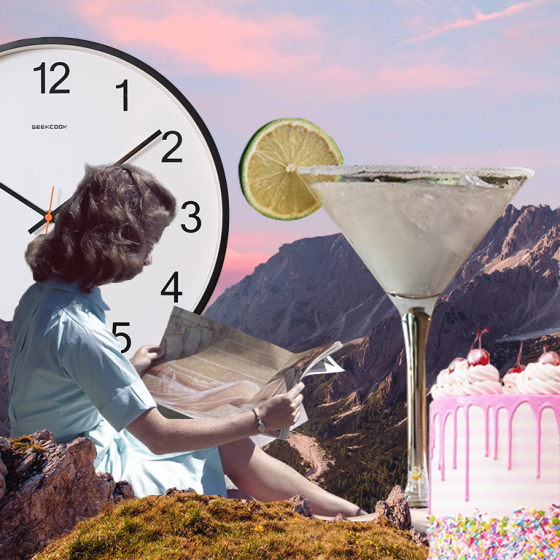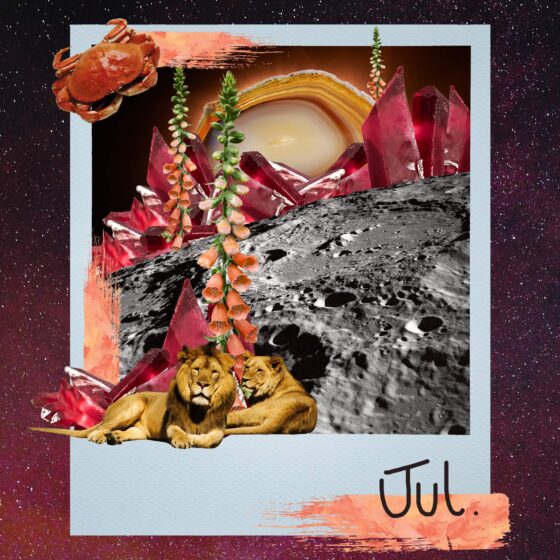So what would happen if suddenly, magically, men could menstruate and women could not? Clearly, menstruation would become an enviable, worthy, masculine event: Men would brag about how long and how much. Young boys would talk about it as the envied beginning of manhood. Gifts, religious ceremonies, family dinners, and stag parties would mark the day.
‘If Men Could Menstruate’ by Gloria Steinem
My little sister started her period before I did. She was 12. I still remember the anxiety I felt about starting mine. The essays lamenting its absence written in fountain pen in my padlocked diary. All my friends got theirs before me, and I thought about it all the time. Willed it to come. Waited for that moment I would pull down my knickers and see the red stain that supposedly marked my transition into womanhood. A bit like Margaret in the Judy Blume book that was my teenage bible, Are you there, God? It’s me Margaret.
When I was around 15 (according to the NHS, the average age is 12), it finally showed up without fanfare – there were no period parties or gushing congratulations. It just arrived. I had been told what to expect by my mum, who gave me a book about where babies come from and a holder for my tampons. And just as it came, I wished it was gone.
My periods were heavy; so heavy that I often leaked through my school uniform and onto the chair. The memory of hurriedly sitting back down to hide the evidence still haunts me. The shame that no sanitary towel can mop up. My period felt like an unwieldy beast that would sneak up on me with no regularity, agonisingly long and painful. My hot water bottle became my best friend. It still is.
Mastering menstruation
I spent years trying to perfect the art of tampon insertion while locked in the family bathroom. I couldn’t work the applicators. I certainly couldn’t get a non-applicator one up there. And if I did, I always pissed it out. I had no idea what I was doing or which was the right hole. I couldn’t Google what to do – there was no Google – and I couldn’t ask my friends. And so, I remained loyal to towels. But I hated them. I loathed them for stopping me from swimming, for making me feel like I was wearing a nappy. As I got older, I kept trying tampons, thinking I must know what to do by now, but I found they just made my period pain more intense. My vagina is super sensitive – I once ended up in A&E with a severe allergic reaction to cheap toilet paper, don’t ask! – so they always felt uncomfortable and itchy, and I ended up wearing a towel anyway.
When I was 16, I got put on the pill by my GP, which made my periods more bearable. It masked the pain a little and tamed them into regularity. Then came my lightbulb moment. When I was around 25 – 12 years ago, I think – my boyfriend at the time (yep, the best thing I got out of that relationship) told me about his friend who used a Mooncup. I recalled seeing stickers about them on the back of the toilet doors at uni, but I’d always ignored them, thinking they weren’t for me.
But then I started using one. And without exaggeration, my cup changed my relationship with my period. I loved that you could put it in and not worry for 12 hours. No risk of toxic shock syndrome. No more itchy vagina. I also found that I loved how a menstrual cup allows you to see your menstrual blood, to watch as it changes from brown at the very start of my cycle to thick and red when my flow gets heavier. I even loved seeing the occasional lumps and clots that I might miss if I just pulled out a tampon and put it in the bin.
Cycles and shame
There is so much shame about periods that we internalise, which is why so many women just want to discard the evidence in a bin or flush it down the loo. Seeing your own blood, smelling it even, washes away the menstrual taboos that have become so ingrained in how we think about our period, the idea that it’s dirty or unclean. Walk down a supermarket aisle for ‘feminine care’ and there’s a plethora of products aimed at freshening and deodorising. No other product used to soak up blood has perfume, so why do period products? No wonder we have been made to feel ashamed.
Now I am 36, my relationship with my period is as tumultuous as it was when I was 15. I feel it sneaking up on me when my belly starts swelling up. In those few pre-period days, I suddenly feel very uncomfortable in my own skin. The difference now is that I am a little kinder to myself. Because I know that for the next three, or maybe even seven, days, I might feel hot and cold and a bit down, perhaps lacking in energy. And that’s okay, because (I hope) my period will still be coming to visit for a while yet. And although I often hate it – curse it for the pain and inconvenience – I sometimes love it, too. There’s a twisted kind of comfort in knowing that it will come. Or maybe even one day, if I decide I wanted to start a family, in finding it doesn’t.
The plastic-free period
I started using a cup for personal reasons, but now I have been using one for around 12 years, I am a little smug about my green period credentials. Over 12 years, I probably would have used around 2,880 tampons. (That’s if I changed my tampon every six hours, which amounts to about four tampons per day for around five days of a period.)
The average person who menstruates is estimated to use (and therefore throw away) in excess of 10,000 tampons or sanitary towels in their menstrual lifetime. According to Friends of the Earth, it is estimated that pads are made of up to 90 per cent plastic, with a pack of pads equating to four plastic bags. Some tampons have plastic in them too – some even have it in the string – and plastic applicators are made from polyethylene and polypropylene. And if you’re using tampons because you think they are more hygienic, they are not classified as medical devices so therefore are not sterile, meaning any individual packaging is completely wasteful, and will just end up in landfill, in our oceans or on our beaches. But there are other options.
Cup life
There are lots of menstrual cups available in different shapes and sizes for different shaped vaginas. I started with a Mooncup, which really worked for me and I tried a Diva cup, which I didn’t like as it was too long and slim for me. I have also used an Intimina Lily Cup. Yes, they take a while to get used to. You fold it up and insert it, then empty it into the toilet, rinse it out with water and put it back in. At the end of your period, you just put it in boiling water to sterilise it. The initial outlay is quite pricey, but if you look after your cup you can use it for around two years.
Small steps
For those who can’t face ditching tampons, these reusable applicators are worth a try.
Period pants
Oh how I wish these had existing when I was young. They have a special absorbant lining and are machine-washable – just give them a rinse then throw them in with your usual load. They are also a good back-up if you’re using a cup and are experiencing heavy flow or are worried about leaks. Thinx offers lots of styles, including my favourite high waist.
Eco pads
Reusable sanitary towels are also amazing. Sometimes when I am at home (I now allow myself I day off during my period if I need it) I like the comfort of them. They are also much kinder to your vagina than disposable pads. There are a variety available at Plastic Freedom, which is the best website for plastic-free living, FYI.
How to ease the pain
I rub Holy Cramp CBD Oil on my belly, as it really eases cramps. I am a huge fan of CBD, the legal and non-psychoactive component of cannabis, for reducing anxiety too.
A bath is my go-to when I am on my period and feeling blue. According to research by the US National Sleep Foundation, 30 per cent of women experience disturbed sleep during menstruation, and I am certainly one of them. A bath relaxes me. I use a Twilight bath bomb, which contains sleep-inducing lavender, then cover myself in Sleepy lotion, both from Lush. The divine smell of oatmeal, lavender and tonka lingers on my skin until morning.
Further – and completely essential – reading:
“Intensifying all that messy pain is the stigma of a period. Roughly half of all women in the world are of reproductive age, so around a quarter of the world’s population – including all trans men and non-binary people – get periods every month. And yet, still, it feels like it’s something almost secret, a private suffering to be endured with quiet stoicism,” writes Lynn Enright in Vagina: A Re-Education. One of the most necessary books I read last year, I’m amazed to admit that, as a 36-year-old person with a vagina, this book contained lots of facts I had no idea about.
Period Power by Maisie Hill is mind-altering. She loves her cycle and wants everyone else to, too. Some of the facts in her book are mind-blowing, not least her revelations about the pill. Lots of her clients, she reveals, found that when they came off the pill, they were no longer attracted to their long-term partners. “You’re genetically programmed to be attracted to the pheromones of someone who is genetically dissimilar to you – nature’s way of keeping the gene pool diverse – but studies have found that when you’re on the pill, you’re more likely to be attracted to the pheromones of someone who has genes similar to yours.” she writes.
We’ve got years of imposed shame to get over, so take small steps and be kind to yourself. We’re here for you, girl.

